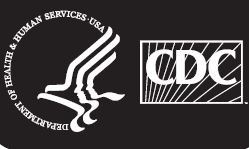The Center for Disease Control (CDC) released a major report last month, focusing on child mental health from the period of 2005 through 2011. The report features new summary statistics on the prevalence of mental health disorders as well as estimates of the costs of these conditions.
The report summarizes results from a number of federal surveillance systems and the surveys that are generated from them. The methods of data collection do vary in line with different priorities of the collecting agency, with mental health data imbedded in broader health assessment for some of the systems.
With regard to prevalence, the report concluded that up to 1 in 5 youth meet criteria for a diagnosable mental disorder in a given year with the rate appearing to rise since the mid-1990s. The most common disorders include ADHD (6.8%), conduct problems (3.5%), anxiety (3.0%), depression (2.1%), and autistic spectrum disorders (1.1%). The rate of a drug use and alcohol disorder in the previous year was 4.7% and 4.2% respectively while the prevalence of cigarette dependence within the previous month was 2.8%. These rates varied considerably by sex and ethnicity. A total of 40% of individuals with one disorder met criteria for at least one other. Suicide was found to be the second leading cause of death among youth between the ages of 12 and 17, with an overall rate of 4.5 suicides per 100,000 persons (ages 10 to 17) . Moreover, the total cost of psychiatric disorders in youth was estimated at $247 billion dollars and are now some of the mostly costly medical problems to treat. Inpatient hospitalizations for children and adolescents have also risen. The rate of hospitalization for mood disorders has risen 80% from 1997 to 2010, resulting in mood disorder being one of the most common principle causes of inpatient hospitalization overall.
The authors of the report concluded that mental illness among youth remains a major public health issue in need of more comprehensive surveillance systems.
While determining the rate of youth psychiatric disorders seems like a relatively straightforward question, this report illustrates how complicated such an undertaking can be. The wide range of techniques used to come up with such epidemiological data result in significant challenges when it comes to aggregating results from a number of reports and the summary numbers presented here should certainly not be seen as set in stone. As the authors suggest, improving the consistency and reliability of surveillance studies are an important part of making progress overall in the approach to youth with emotional behavioral problems.
Reference
Perou R, et al. Mental health surveillance among children – United States 2005-2011. Morbidity and Mortality Report 2013;62:1-35.

